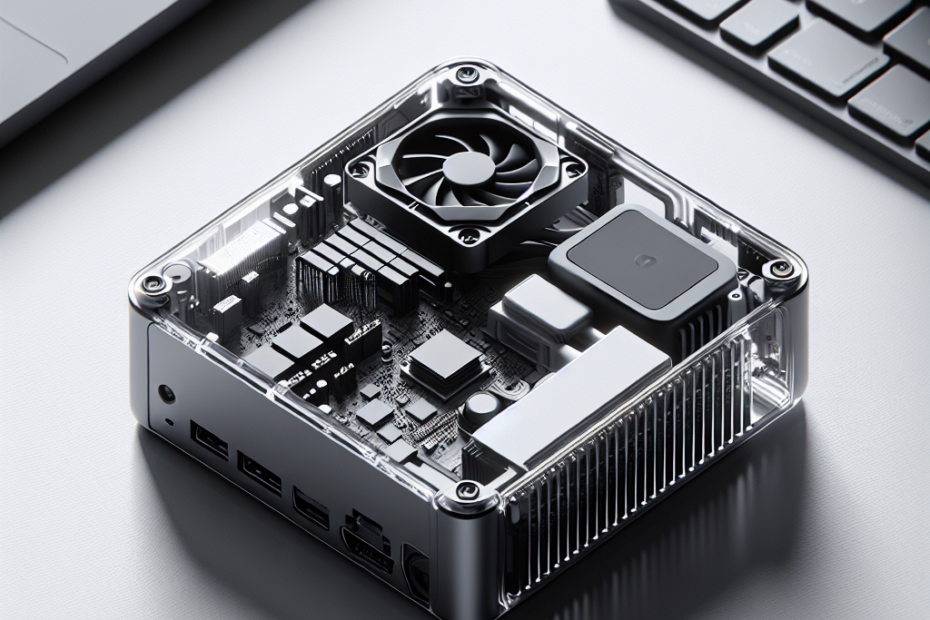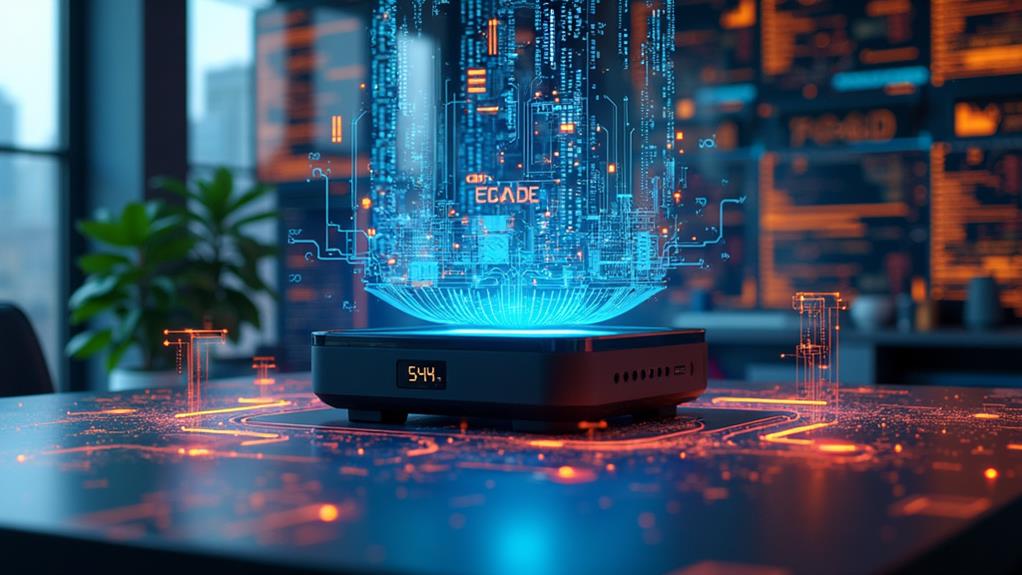



If you’ve been eyeing a compact setup for your design work, you might be wondering if a mini PC has the muscle to handle your CAD applications. Understanding the hardware demands of such intensive software is key in choosing the right system. In this article, we explore the capabilities of mini PCs, considering their size, performance, and the feasibility of running CAD programs effectively. Whether you’re a professional designer or a hobbyist looking to save space, you’ll find valuable insights into making your mini workspace both powerful and productive.
Understanding CAD Software Requirements
General hardware requirements for CAD software
When you’re looking to run CAD software, you need to understand that your computer’s hardware plays a pivotal role in how well the software will perform. Generally, CAD software requires a powerful processor (CPU), a substantial amount of RAM, a dedicated graphics card (GPU), and adequate storage to handle large and complex files. The more robust your hardware is, the smoother and quicker your CAD applications will operate, which is crucial when working on intricate designs.
Specific CAD software and their individual needs
Different CAD applications have varying requirements. For instance, software like AutoCAD, used for drafting and designing 2D and 3D models, might require a different set of resources compared to SolidWorks, which is often used for mechanical engineering and design. It’s essential for you to check the specific requirements for the CAD software you plan to use. The manufacturer’s recommended system requirements can give you a baseline for the kind of hardware specifications you should be looking for.
Importance of processing power and RAM
In the realm of CAD, processing power is king. Faster and more powerful processors enable quick processing of complex calculations and rendering, which is fundamental in CAD work. Similarly, an ample amount of RAM allows you to work on large projects without experiencing significant slowdowns. RAM acts like your workspace, the more you have, the more room there is to work efficiently on complex designs.
The role of graphics in CAD performance
While CPU power is important, CAD performance is also heavily influenced by graphics capability. Using a dedicated GPU with its own memory (VRAM) can drastically improve the speed at which models render and the overall smoothness of your CAD experience. GPUs specifically designed for CAD can provide better visual accuracy and more detailed graphics, which can be crucial for spotting imperfections in your designs.
Defining Mini PCs
Characteristics of mini PCs
Mini PCs, as the name suggests, are compact versions of traditional desktop computers. They come in small form factors that make them highly portable and convenient for space-constrained setups. Despite their small size, many are quite powerful and can be equipped with high-end components.
Typical hardware specifications
Although mini PCs are small, they can pack a punch when it comes to hardware. Many have specifications that rival their larger counterparts, including multi-core processors, substantial RAM capacities, and even dedicated graphics cards. Storage options also tend to be versatile, with support for fast SSDs that hasten boot and load times.
Advantages and limitations of mini PCs
You’ll find that mini PCs offer some notable advantages, like taking up less space and being more energy-efficient. However, their compact size can limit upgradeability and cooling, which are critical factors in performance-intensive tasks like CAD. There might also be fewer ports for connectivity compared to traditional desktops.
Comparing mini PCs to desktops and laptops
When you compare mini PCs to full-sized desktops, you’ll notice that desktops generally afford you more options for customization and upgrading. Laptops, on the other hand, offer portability but can have limitations in terms of thermal management and performance when stacked against a similarly equipped mini PC. It comes down to what your priorities are and what kind of CAD work you intend to do.
Types of Mini PCs Suitable for CAD Software
Brands and models with sufficient specs for CAD
Several brands offer mini PCs that are capable of handling CAD workloads. You might consider models from Intel NUC, HP Z2 Mini, and Dell’s Precision series. These units often come with powerful CPUs and the option to include a dedicated GPU, which is vital for CAD.
Custom-built mini PCs
If off-the-shelf options don’t suit your needs, you can opt for a custom-built mini PC. This route allows you to select components that match your CAD software’s requirements closely. Just be mindful that building a mini PC might be a bit more challenging due to spatial constraints and cooling considerations.
Workstation-grade mini PCs
Certain mini PCs are labeled as workstation-grade, meaning they’re equipped with components that are optimized for professional workloads like CAD. These systems typically feature higher-end, multi-core processors, professional-grade GPUs, and more RAM.
Gaming mini PCs and their relevance to CAD
Gaming mini PCs are an interesting option because they often have high-spec hardware to handle intensive gaming sessions. This gaming capability translates well to CAD applications, especially since both tasks can require considerable GPU resources.
Evaluating Processor Performance
CPU types in mini PCs
In mini PCs, you’ll mostly find two CPU types: mobile variants, which are designed for energy efficiency, and desktop-grade processors, which offer higher performance levels. Depending on your specific CAD needs, you may opt for one over the other. Mobile processors work well for basic CAD tasks, while desktop-grade ones are better suited for more complex work.
Core count and clock speed considerations
When evaluating processors for CAD, look at the core count and clock speed. More cores can mean better multitasking and handling of multi-threaded applications, and higher clock speeds can improve the performance of single-threaded tasks, which are still prevalent in some CAD software.
Benchmarks and real-world performance
Benchmarks can be useful tools in comparing CPUs, as they provide standardized performance metrics. However, real-world performance in your CAD applications is what truly matters. Try to find reviews or user experiences that reflect the kind of work you’ll be doing to better gauge how the processor will handle your workload.
Comparing ARM-based and x86 processors for CAD
While most mini PCs use x86 processors, there’s a growing interest in ARM-based systems for their power efficiency. However, ARM processors might not be compatible with all CAD software, and their performance in computationally intensive tasks has historically lagged behind that of x86 processors.
Assessing Graphics Capabilities
Integrated vs. dedicated GPUs in mini PCs
With mini PCs, you’ll often have to choose between integrated and dedicated GPUs. Integrated graphics are built into the CPU and share system RAM, which can be sufficient for basic CAD tasks. However, dedicated GPUs have their own VRAM and can dramatically improve CAD performance, especially in rendering and real-time visualization.
GPU memory requirements for CAD
The complexity of your CAD work dictates how much GPU memory you’ll need. Tasks like rendering high-resolution textures or dealing with intricate 3D models will require more VRAM. As a rule of thumb, aim for a GPU with at least 4GB of dedicated memory for moderate CAD work.
Performance of popular GPUs in mini PCs
Popular GPUs from Nvidia and AMD are available in some mini PCs and provide the performance needed for CAD software. Look for GPUs that are designed for workstations, such as Nvidia’s Quadro series, which are tailored for professional applications and have optimized drivers for CAD.
Upgradability of mini PC graphic components
One of the drawbacks of mini PCs is the limited upgradability of graphic components. While some models allow for GPU upgrades, many have GPUs soldered onto the motherboard, making upgrades impractical or impossible. Keep this in mind if you anticipate needing more graphic power in the future.
Memory and Storage Considerations
Recommended RAM for running CAD software
For running CAD software efficiently, it is generally recommended to have at least 16GB of RAM. However, if you work with particularly complex models or large datasets, having 32GB or more can make a significant difference in performance.
Impact of SSDs on CAD performance
solid-state drives (SSDs) offer much faster data access speeds than traditional hard drives (HDDs). This means quicker boot times, faster file transfers, and overall snappier performance when accessing CAD files. Many mini PCs come with SSDs by default, but it’s worth ensuring the one you choose does.
The necessity of storage speed and capacity
Speed and capacity go hand in hand when it comes to storage in CAD work. Fast storage speeds ensure that you can quickly open and save large files, while ample storage capacity means you won’t run out of space for your projects. SSDs are recommended for their speed, but ensure you have enough capacity, or consider additional external storage solutions.
Upgrading memory and storage in mini PCs
Many mini PCs allow you to upgrade both memory and storage, although the extent of this capability varies. Some have easily accessible memory slots and extra bays for additional SSDs or HDDs, while others are more limited. It’s a good idea to check for these options before purchasing if you think you might need to upgrade in the future.
Disclosure: As an Amazon Associate, I earn from qualifying purchases.





